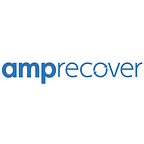Rising Costs Drive New Healthcare Strategies Among Large Employers in 2020: Musculoskeletal Issues Remain Priciest Among High Cost Claims.
The cost of employer-sponsored healthcare has increased 5% annually for the last 7 years and is predicted to top $15,000 per employee in 2020. Faced with these perpetually rising benefit expenditures, which are increasing faster than both wages and inflation, many large employers are implementing new strategies to better manage costs while maintaining a healthy and engaged workforce.
According to the 2020 Large Employers’ Health Care Strategy and Plan Design Survey by the National Business Group on Health, employers identified implementing more virtual care solutions and a more focused strategy on high-cost claims as their top initiatives for 2020. Additionally, many employers are moving towards center of excellence care models and implementing an employee engagement platform to aggregate point solutions and personalize employee communication.
Virtual care solutions have been increasing in popularity among large employers in recent years and the number of employers who believe virtual care will significantly influence how health care is delivered in the future continues to grow (64% for 2020 vs 52% for 2019). The majority of respondents (51%) will offer more virtual care programs next year. “Virtual care solutions bring health care to the consumer rather than the consumer to health care,” said Brian Marcotte, President and CEO of the National Business Group on Health. “They continue to gain momentum as employers seek different ways to deliver cost effective, quality health care while improving access and the consumer experience. Of particular note is the growing interest among employers to offer virtual care for mental health as well as musculoskeletal conditions,” he continued.
Musculoskeletal issues are the priciest among the high-cost claims that concern respondents, with 44% of employers ranking them as the top condition impacting their costs and 85% ranking them among the top three conditions. It’s not surprising then, that a combination of the top two initiatives—virtual care for musculoskeletal management—shows the greatest potential for growth in the coming years. 23% of respondents will offer musculoskeletal management virtual services next year with another 38% considering it by 2022.
The use of Center’s of Excellence (COE’s) for musculoskeletal disorders is also on the rise, with 47% of employers implementing a COE strategy next year. Nearly double that, 80% of employers, reported that they will be implementing, or are considering implementing, a COE strategy for Orthopedics in 2021/22.
There are numerous examples of large employers currently implementing all of the strategies outlined in the survey. Early adopters of the COE strategy include Lowe’s, Walmart, McKesson and JetBlue Airways who in 2013 partnered with the Pacific Business Group on Health (PBGH) and Health Design Plus (HDP) to launch the Employers Centers of Excellence Network (ECEN). With regard to virtual care, some employers will launch their own applications—as Amazon did last week—while others will look to technology providers to help patients navigate the COE system.
AMP Recover, a health intelligence platform purpose-built for orthopedic rehabilitation, is positioned to address the needs of large employers as they implement remote care and COE strategies to combat high-cost musculoskeletal issues among their employees. In the Center of Excellence model employers partner with health systems or hospitals that provide highly specialized treatment and procedures for complex conditions in order to boost quality and reduce health care costs. The COE’s are often located outside of the employers region, necessitating travel by the employee and a brief stay at the COE for the required procedure and initial rehabilitation.
AMP Recover’s platform equips providers with the tools and analytics to successfully manage these destination care scenarios, granting insights into the entire rehabilitative episode and helping navigate patients to a successful recovery regardless of their location. The care pathways perfected by the COE are delivered digitally via mobile device, thus extending their clinical reach beyond the hospital walls.
Orthopedic rehabilitation requires patient participation in self directed and supervised exercise programs. AMP Recover delivers the COE’s mandated recovery protocols—including home exercise programs and outcomes surveys— to both the patient and the Affiliate Physical Therapist charged with overseeing their recovery once they depart the COE and return home.
AMP Recover is currently deployed in numerous COE and destination care settings to improve the patient experience and clinical outcomes. Please reach out to learn more.
